I've been on a never-ending quest for the perfect task management solution, and with that, I've tried my fair share of to-do list apps.
Todoist is one of the most well known to-do list apps and has likely been on everyones radar at some point.
However, with the recent improvements to Apple's Reminders app, I decided to give it a shot, and I must say, I've been pleasantly surprised.
In this article, I'll share my experience with Todoist and Reminders + a third option that I'm currently using in my day-to-day.
A quick look at Todoist vs. Apple Reminders
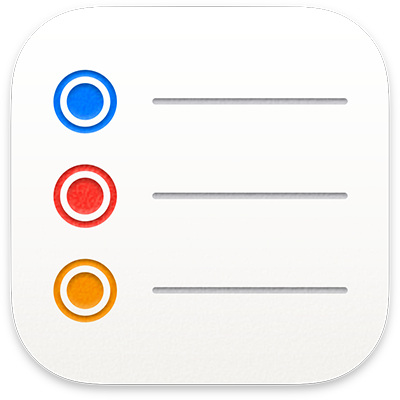 Apple Reminders Apple Reminders | | |
|---|---|---|
| Platforms | ⭐⭐macOS, iOS, iPadOS, watchOS | ⭐⭐⭐Web, macOS, Windows, Android, iOS, browser extensions |
| Pricing | ⭐⭐⭐Free | ⭐⭐Free, Premium ($3/month or $36/year) |
| Natural Language Input | ⭐⭐Basic | ⭐⭐⭐Advanced |
| Collaboration | ⭐Limited | ⭐⭐⭐Robust |
| Integrations | ⭐⭐Deep system integration on Apple devices | ⭐⭐⭐Over 30 app integrations |
| Views | ⭐⭐List, Board | ⭐⭐⭐List, Board, Calendar, Schedule |
| Location Reminders | ⭐⭐⭐Yes | ⭐No |
Todoist is more generous with natural language input, but Reminders offers more seamless integration with the Apple ecosystem
Todoist's natural language input is executed exceptionally well.
With just a few words, I can add a new task, assign it to a project, set a priority, and schedule reminders – all without navigating through multiple menus.
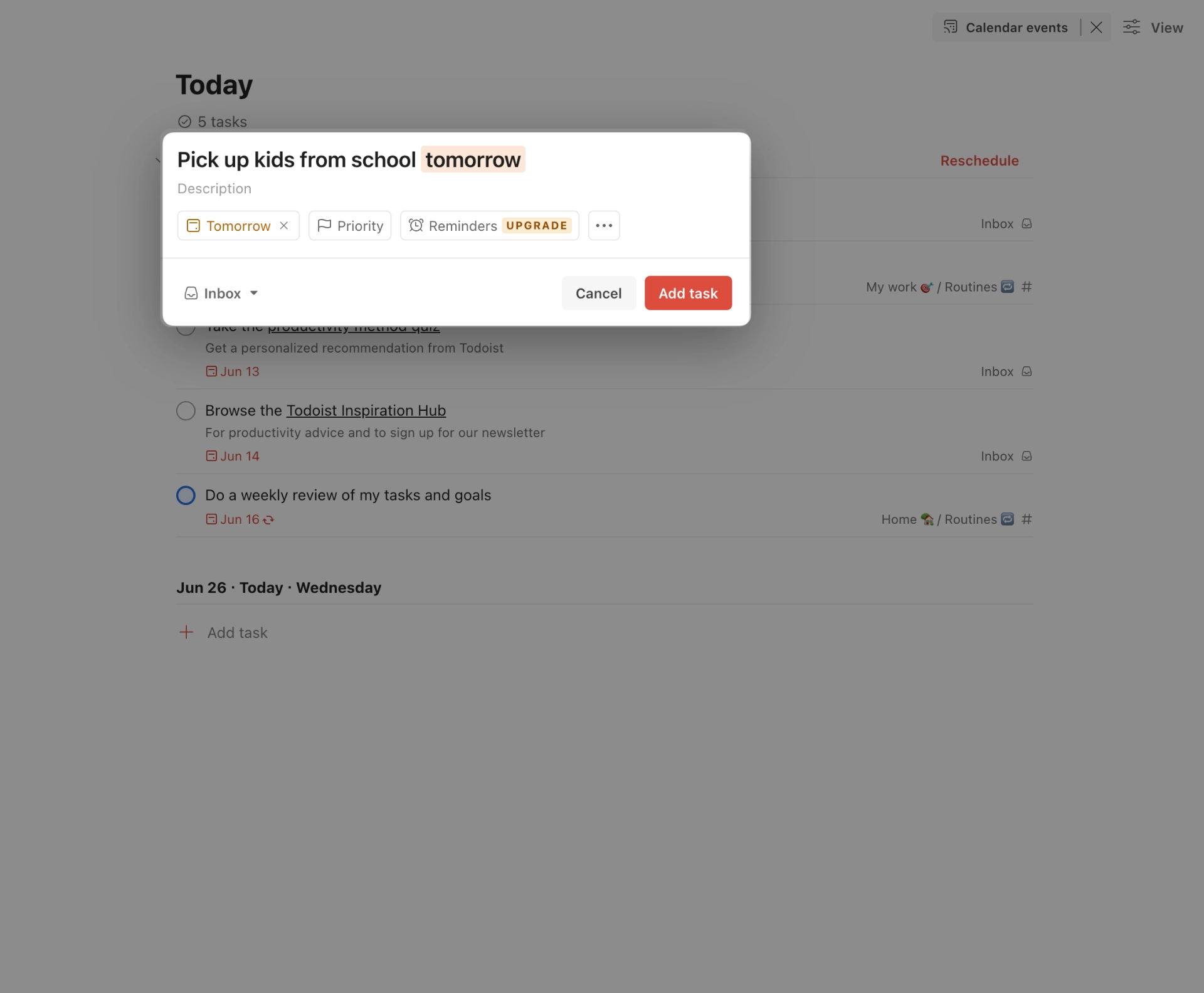 |
However, Apple Reminders shines when it comes to integration with the Apple ecosystem.
I can create reminders directly from other apps like Mail, Notes, and even the call screen.
With just a few taps, I can turn an email, note, or missed call into a task, complete with relevant context and links (iOS only).
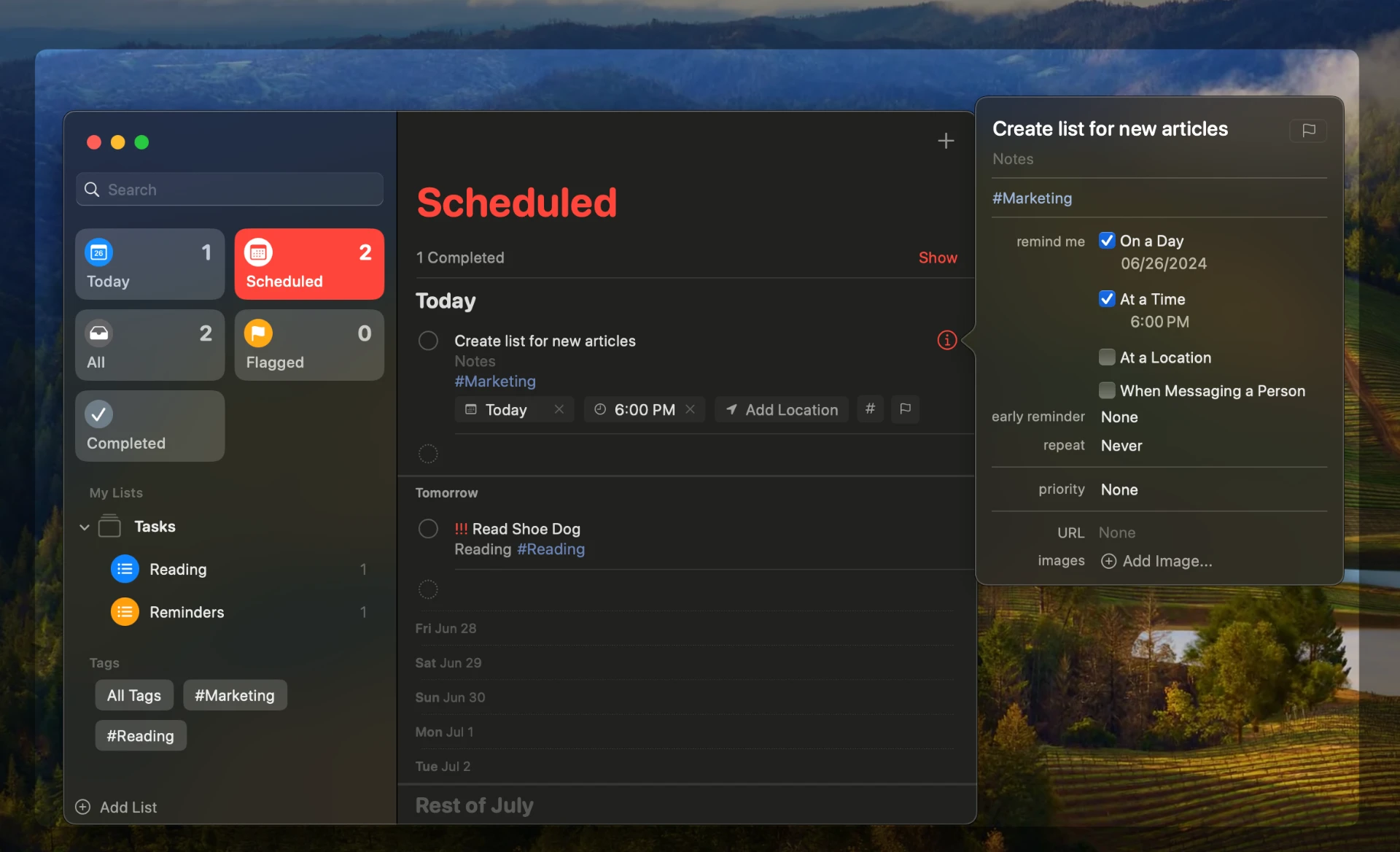 |
This level of integration is truly impressive and streamlined my workflow significantly when I used Reminders.
Reminders excels with the Today view, while Todoist offers more customization for views and filters
One of the features I've come to appreciate in Apple Reminders is the Today view.
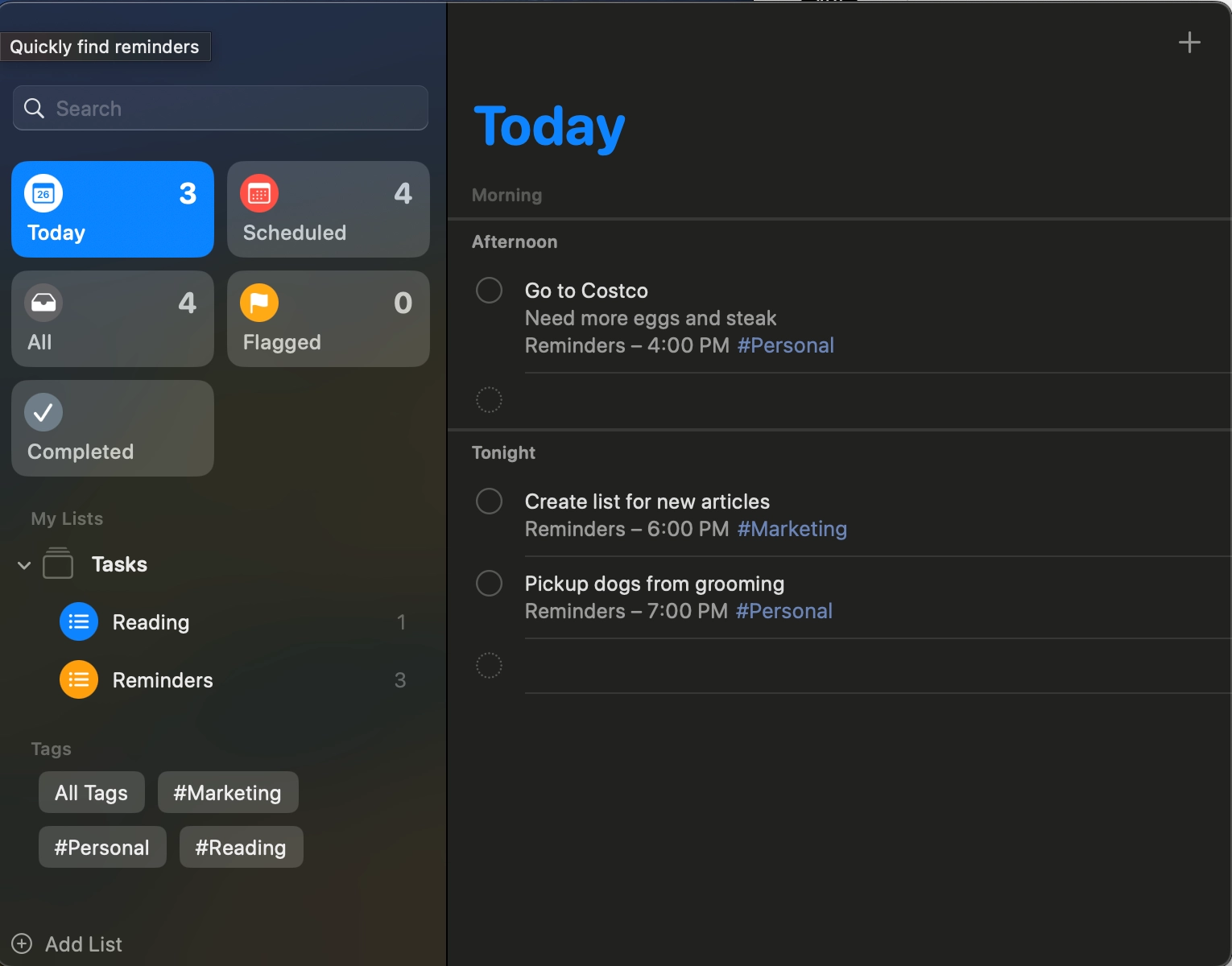 |
It neatly partitions my tasks into morning, afternoon, and evening sections, allowing me to plan my day more effectively.
I can easily move tasks between these time slots using drag-and-drop gestures, and the app automatically sets reminders based on the chosen time slot.
This layout has been a game-changer for me, as it aligns perfectly with my daily routine.
That being said, Todoist offers more customization options when it comes to views and filters.
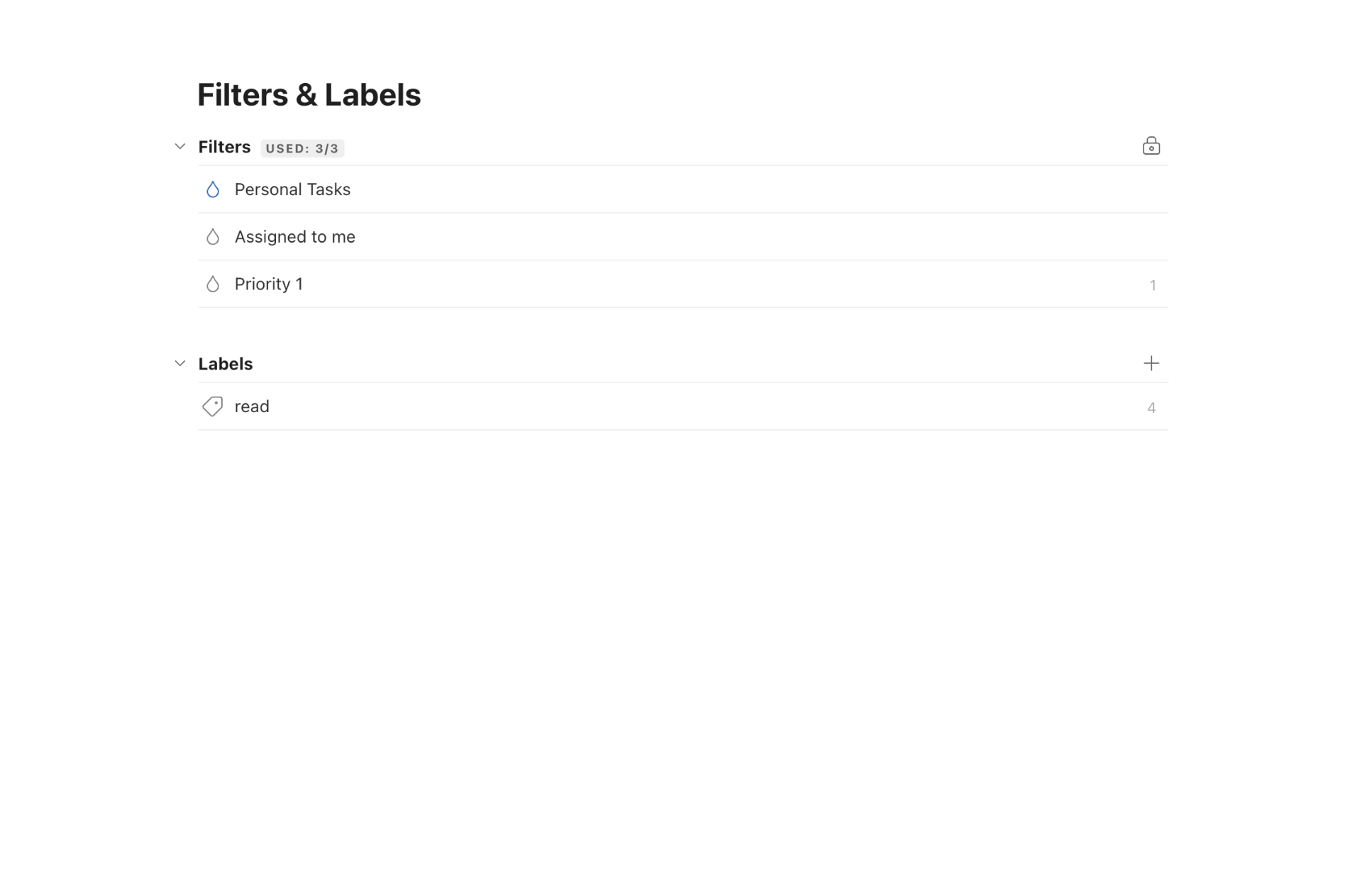 |
With its powerful filtering and sorting capabilities, I can create custom views tailored to my specific needs.
Whether it's a Kanban board for project management or a filtered list for specific contexts, Todoist gives me the flexibility to organize my tasks in a way that works best for me.
Todoist wins with collaboration and sharing, but Reminders keeps things simple for individuals
If you work in a team or collaborate with others frequently, Todoist is the clear winner when it comes to collaboration and sharing features.
With its robust sharing capabilities, I can easily assign tasks to team members, comment on tasks, and track progress in real-time.
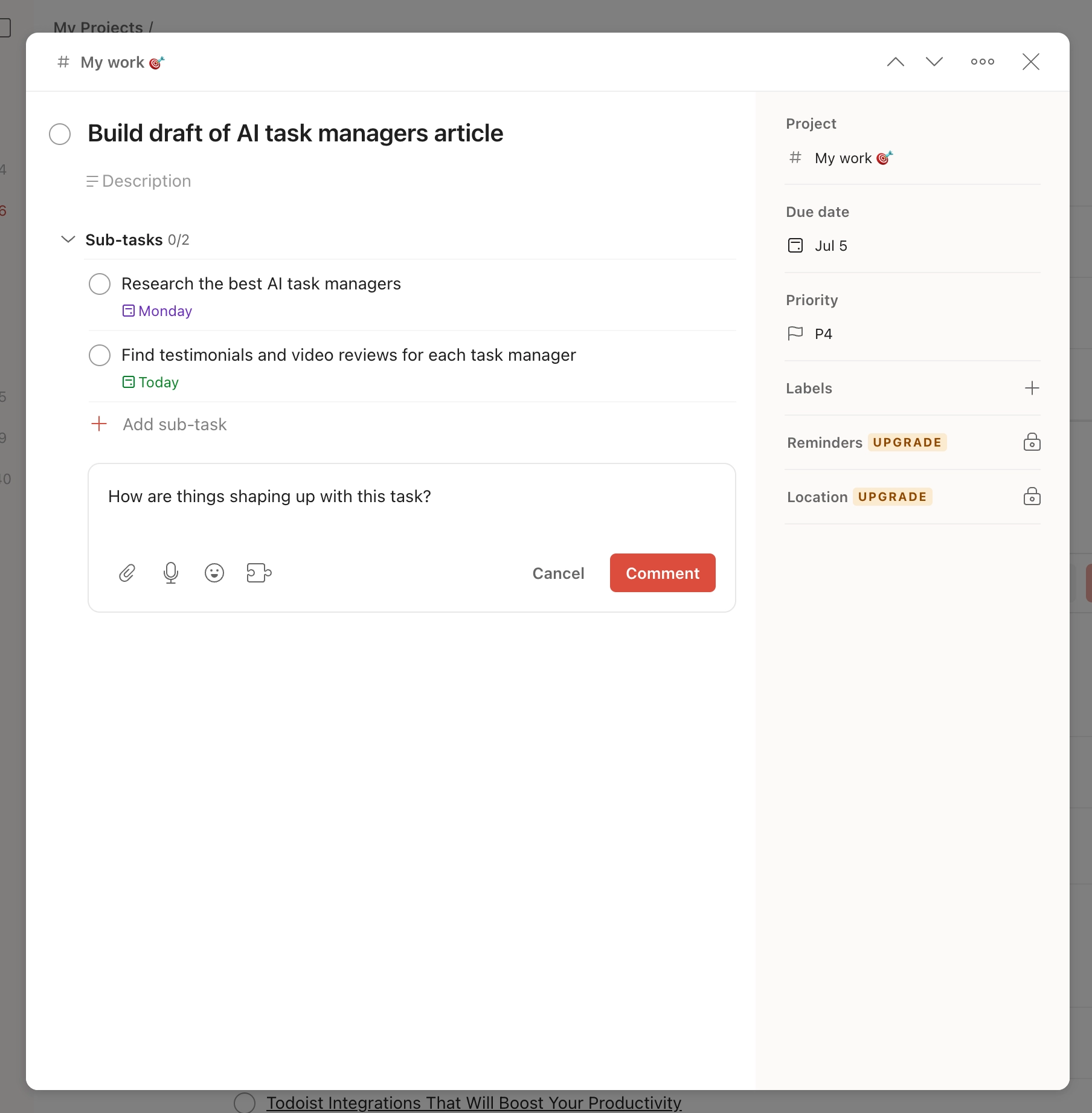 |
Todoist also offers integrations with various productivity apps and services, making it a powerful tool for teams and organizations.
On the other hand, Apple Reminders keeps things simple and focused on individual productivity.
While it lacks advanced collaboration features, this simplicity can be a strength for those who prefer a more streamlined and distraction-free task management experience.
If you're an individual user or work primarily on your own, Reminders might be the better choice for you.
Todoist provides a smoother experience when organizing tasks
When it comes to organizing tasks, Todoist takes the lead with its intuitive drag-and-drop functionality and hierarchical project structure.
 |
I can easily move tasks between projects, sub-projects, and sections, making it a breeze to keep my tasks organized and prioritized.
While Reminders also offers list and folder organization, the experience is not as smooth, especially on desktop.
Multi-selecting tasks and moving them across lists can be cumbersome, which can hinder my productivity.
Pricing: Todoist offers more flexibility, but Reminders is free with Apple devices
Todoist offers a free plan with limited features, as well as premium subscription options with more advanced capabilities.
While the premium plans can be costly for individuals, they provide additional features and integrations that may be worth the investment for power users or teams.
In contrast, Apple Reminders is completely free to use if you own an Apple device.
There are no subscription fees or hidden costs, making it an attractive option for those on a budget or those who prefer to stick with Apple's built-in apps.
Todoist vs. Reminders: Making the choice
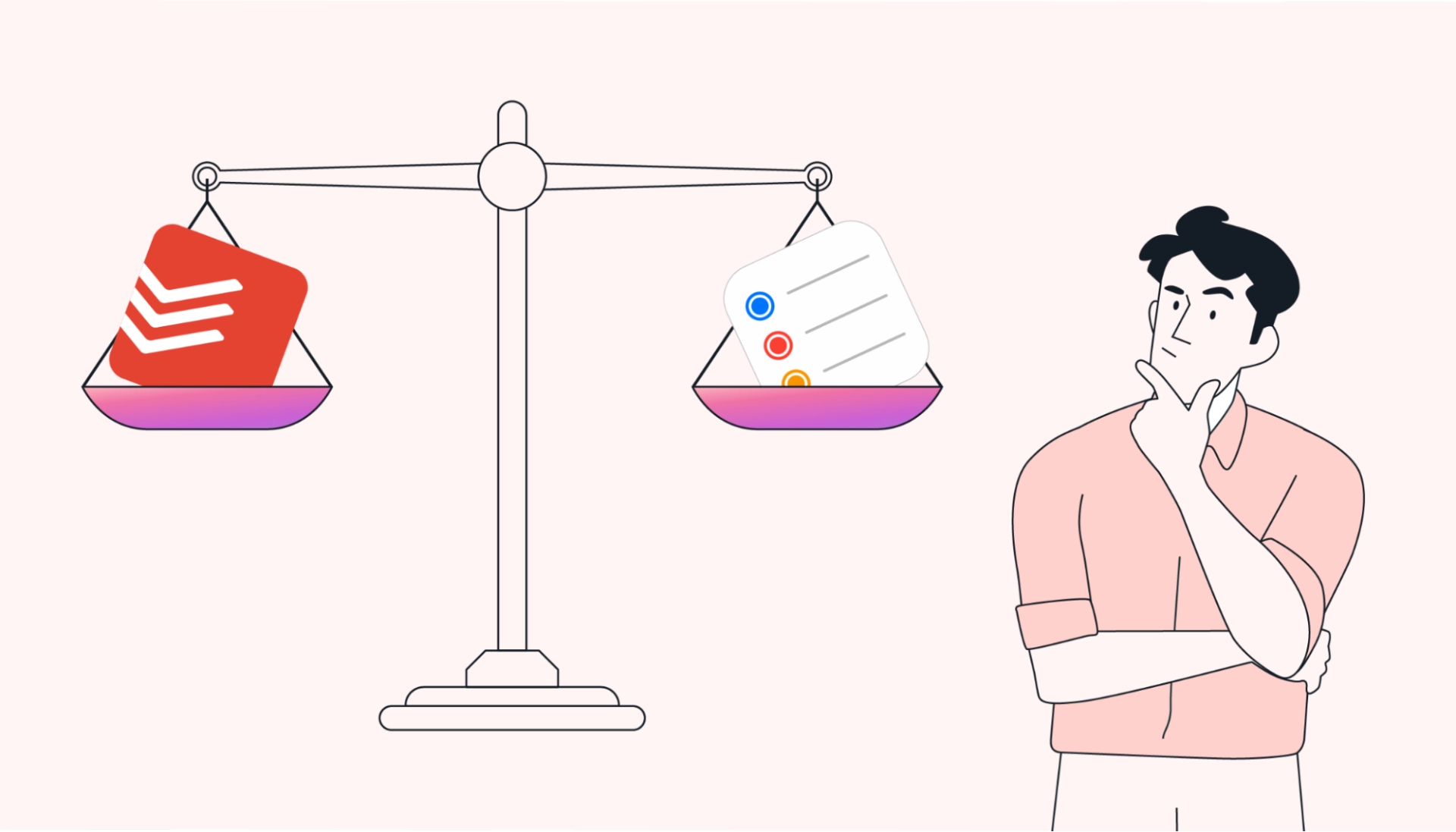 |
When choosing between Todoist and Apple Reminders, consider your specific needs.
If you require advanced task management and collaboration features, Todoist is the better choice.
For simplicity and deep integration with Apple devices, Apple Reminders is more suitable.
Here's a short rundown before we wrap up:
Todoist is great for:
- Power users, professionals, and teams that require advanced features, robust collaboration tools, and cross-platform accessibility.
Apple Reminders is great for:
- Apple Reminders is an excellent choice for Apple users who prioritize simplicity and tight integration with the Apple ecosystem. It's perfect for personal task management and light collaboration.
There's a better option (and I'm using it everyday)
I'm a huge Apple fanboy, but I've dropped Reminders and Todoist and moved all of my personal tasks to Motion.
I've been using Motion for the last six months, and it has become my go-to tool for keeping chaos out of my day-to-day life.
Unlike Todoist and Apple Reminders, Motion offers a comprehensive project and time management solution that integrates both personal and work calendars.
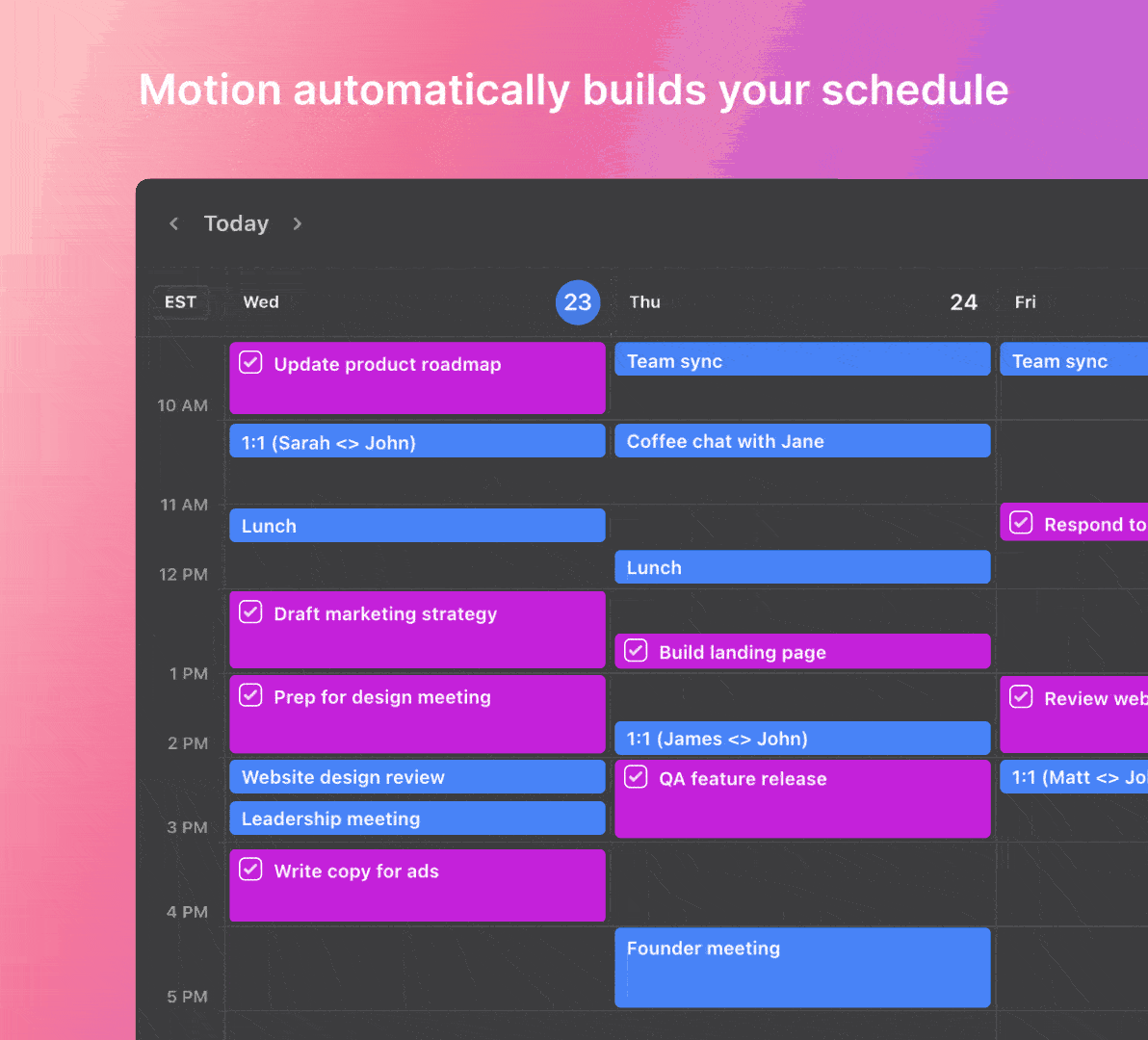 |
Motion's smart scheduling features and AI task manager ensure that my most important tasks are always prioritized, adapting dynamically as priorities shift.
This level of automation has saved me (and 100K other customers) countless hours and reduced the stress of manual scheduling.
In comparison, Todoist and Apple Reminders, while useful, fall short in offering the same level of integration, automation, and customization.
Motion has truly transformed how I manage my tasks and projects, making it the best choice for anyone looking to optimize their productivity.
Sign up for a 7-day free trial today.

Hey, I'm Zac 👋 I'm an SEO leader with a passion for helping brands build content that ranks and empowers their customers. Can often be found tinkering with AI, building sites, or attempting DIY projects.




